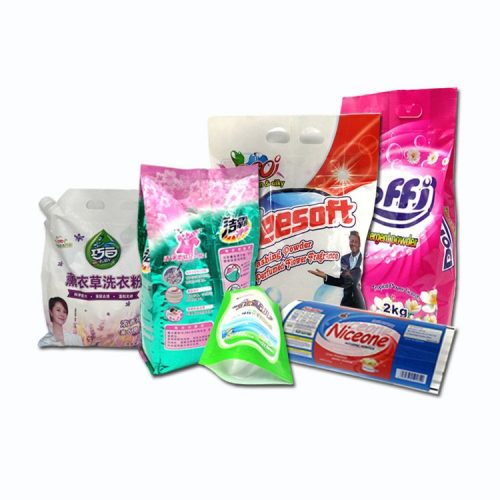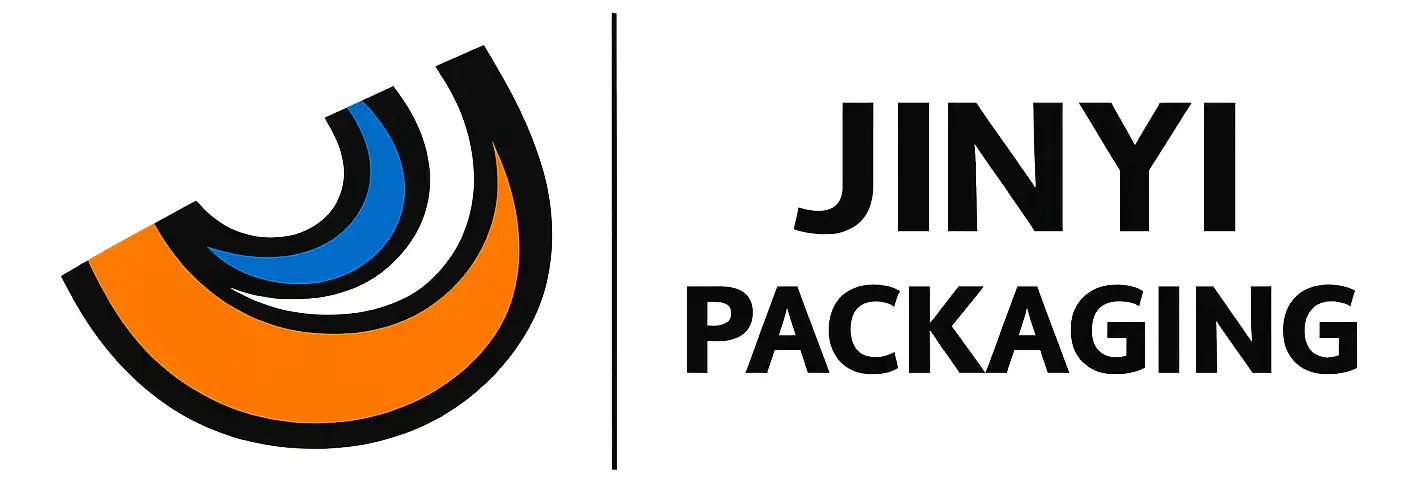Smart Packaging Solutions: A Complete Guide to Washing Powder Bags and Laundry Detergent Pouches
Home » Industry-News » Smart Packaging Solutions: A Complete Guide to Washing Powder Bags and Laundry Detergent Pouches

In our daily lives, clean clothes play an important role in personal hygiene and comfort. While many people focus on the washing machine or detergent brand, few consider how essential the packaging of laundry detergents is. Good packaging protects washing powder from moisture, keeps it fresh, and makes it easy to use and store. In this comprehensive guide, we’ll explore everything you need to know about washing powder bags and laundry detergent pouches, from types and materials to design trends, sustainability, and what to look for when choosing a packaging supplier.
Why Packaging Matters in the Laundry Detergent Industry
Packaging is not just a container; it’s a crucial part of the product experience. Poorly packaged washing powder can clump when exposed to moisture, lose its cleaning effectiveness, and cause mess and waste for the end user. Therefore, manufacturers invest heavily in designing packaging that is practical, durable, cost-effective, and eco-friendly.
Furthermore, with the growing demand for convenient household products, more brands are switching from rigid containers to flexible packaging solutions like pouches and bags. Flexible packaging reduces shipping costs, saves shelf space, and offers greater branding opportunities.
Common Types of Washing Powder Bags
Laundry detergent packaging has evolved significantly. Today, you’ll find a range of flexible packaging options on supermarket shelves and online. Here are some of the most common types:
1. Stand-Up Pouches
Stand-up pouches are one of the most popular options for powdered detergents. Thanks to a gusseted bottom, these bags can stand upright on store shelves, which improves visibility and maximizes branding space. They often come with resealable zippers to keep the powder dry and fresh.
2. Flat Bottom Pouches
Flat bottom pouches offer excellent stability and a premium look. They combine the benefits of stand-up pouches with an extra-wide base, allowing more volume without sacrificing shelf space. Many high-end detergent brands prefer this style.
3. Side Gusset Bags
Side gusset bags expand when filled, providing extra capacity for bulk purchases. They are easy to stack and can be designed with handles for user convenience.
4. Pillow Bags
Pillow-style bags are the simplest and most cost-effective option for washing powder packaging. They are lightweight and often used for single-use or small refill packs.
Key Features to Look for in Washing Powder Bags
When selecting packaging for laundry detergent, brands must consider several factors to ensure the packaging is fit for purpose:
Moisture Barrier: Laundry powder easily absorbs moisture from the air, which causes clumping. High-barrier materials and strong seals are essential.
Resealable Closures: Resealable zippers or spouts help prevent spills and maintain freshness between uses.
Durability: Bags should withstand handling during transport and storage without tearing or puncturing.
Ease of Use: Handles, pour spouts, or easy-tear notches improve user convenience.
Branding and Printing: High-quality printing can help brands stand out in a competitive market.

Materials Commonly Used in Laundry Detergent Pouches
Flexible packaging manufacturers typically use multiple layers of materials to create washing powder bags. Each layer serves a purpose:
Polyethylene (PE): Provides flexibility and sealability.
Polypropylene (PP): Offers strength and moisture resistance.
Aluminum Foil or Metallized Film: Adds an extra barrier against moisture, light, and odors.
PET (Polyester Film): Gives a glossy finish and supports high-quality printing.
Combining these materials in laminated layers allows packaging designers to balance cost, performance, and sustainability.
Sustainability Trends in Laundry Detergent Packaging
Consumers today care more about sustainability than ever before. They expect packaging to be recyclable, reusable, or biodegradable. Many brands are responding by moving away from traditional multi-layer laminated films that are difficult to recycle and adopting mono-material pouches that can be collected and processed more easily.
Another trend is the use of refill packs. Instead of buying a rigid plastic container every time, consumers can purchase a flexible pouch to refill their main container, reducing plastic waste.
Some companies are experimenting with bio-based plastics or compostable films, although these options still face cost and performance challenges.
Design Tips for Effective Laundry Detergent Packaging
Good packaging design goes beyond protection and convenience. It should also communicate your brand’s identity and resonate with your target customers.
Here are some practical design tips:
Use Clear Branding: Your brand name, logo, and key benefits should be easy to read from a distance.
Highlight Eco Features: If your pouches are recyclable or use less plastic, let your customers know on the front of the pack.
Include Usage Instructions: Clear instructions ensure customers use the product correctly and safely.
Consider Transparency: Some brands add a transparent window to show the product inside, which builds trust.
Ensure Compliance: Always follow local labeling regulations for ingredients, weight, safety, and recycling symbols.
Challenges in Washing Powder Packaging
While flexible packaging offers many benefits, it also comes with challenges. For example, multi-layer laminates provide strong barriers but can be difficult to recycle. Balancing barrier performance with sustainability is an ongoing focus for packaging developers.
Additionally, packaging that is too thin or poorly sealed can lead to leaks and customer complaints. This is why working with an experienced packaging supplier is crucial.
Innovations Shaping the Future of Laundry Detergent Pouches
Innovation is driving the next generation of laundry packaging. Some of the trends include:
Mono-Material Films: Single-type plastics make recycling easier and more cost-effective.
Smart Packaging: QR codes on the packaging can link to usage tutorials, recycling instructions, or promotional content.
Lightweighting: Reducing material use without sacrificing durability lowers carbon footprints and shipping costs.
Refill Systems: Many brands now encourage customers to buy larger refill packs instead of new plastic containers each time.
Practical Tips for Brands
If you’re planning to switch to flexible washing powder bags or improve your existing packaging, here are a few practical steps to follow:
Understand Your Product Requirements: Consider moisture sensitivity, shelf life, and storage conditions.
Work with Trusted Suppliers: Choose packaging partners who can provide quality control, compliance, and customization.
Test Before You Scale: Always prototype and test your packaging for leaks, durability, and customer feedback.
Stay Updated: Keep an eye on packaging trends and regulations to ensure your brand stays ahead.
How to Dispose of Washing Powder Bags Responsibly
For consumers, proper disposal is key to reducing environmental impact. Most flexible detergent pouches are not curbside recyclable in many regions, but some stores and recycling programs accept them. Always check local recycling guidelines.
Brands can help by providing clear recycling instructions on the packaging. Some companies also offer take-back programs or partnerships with recycling services.
FAQs About Laundry Detergent Pouches
Q1: Are washing powder bags safe for food contact?
No. While the materials are safe for household products, they are not designed for direct food contact.
Q2: Can I recycle laundry detergent pouches at home?
In many places, mixed-material pouches are not accepted in curbside recycling. However, mono-material pouches are easier to recycle where facilities exist.
Q3: How do I keep washing powder fresh?
Always reseal the bag after each use and store it in a dry place.
Q4: Is flexible packaging better than rigid containers?
It depends. Flexible pouches use less material and are lighter, which saves shipping costs and reduces carbon footprint. However, rigid containers may be easier to reuse in some households.
Final Thoughts
Choosing the right packaging for washing powder is more than a branding decision — it affects product quality, sustainability, customer satisfaction, and your company’s environmental impact. By investing in well-designed, functional, and eco-friendly washing powder bags and laundry detergent pouches, brands can meet consumer expectations and stand out in a crowded market.
For consumers, understanding how packaging works and how to dispose of it responsibly can make a difference too. Small changes, like buying refill packs or choosing brands that use recyclable pouches, contribute to a cleaner, greener future.
If you want to learn more about flexible packaging or see how custom pouches can benefit your brand, explore our Flexible Packaging Guide for more insights.
Contact us for a quote
Our team promises to get back to you within 24 hours by email.
Related Products
https://jyflexpack.com/product/standing-laundry-detergent-pouch/
https://jyflexpack.com/product/laundry-detergent-packaging-bags/

